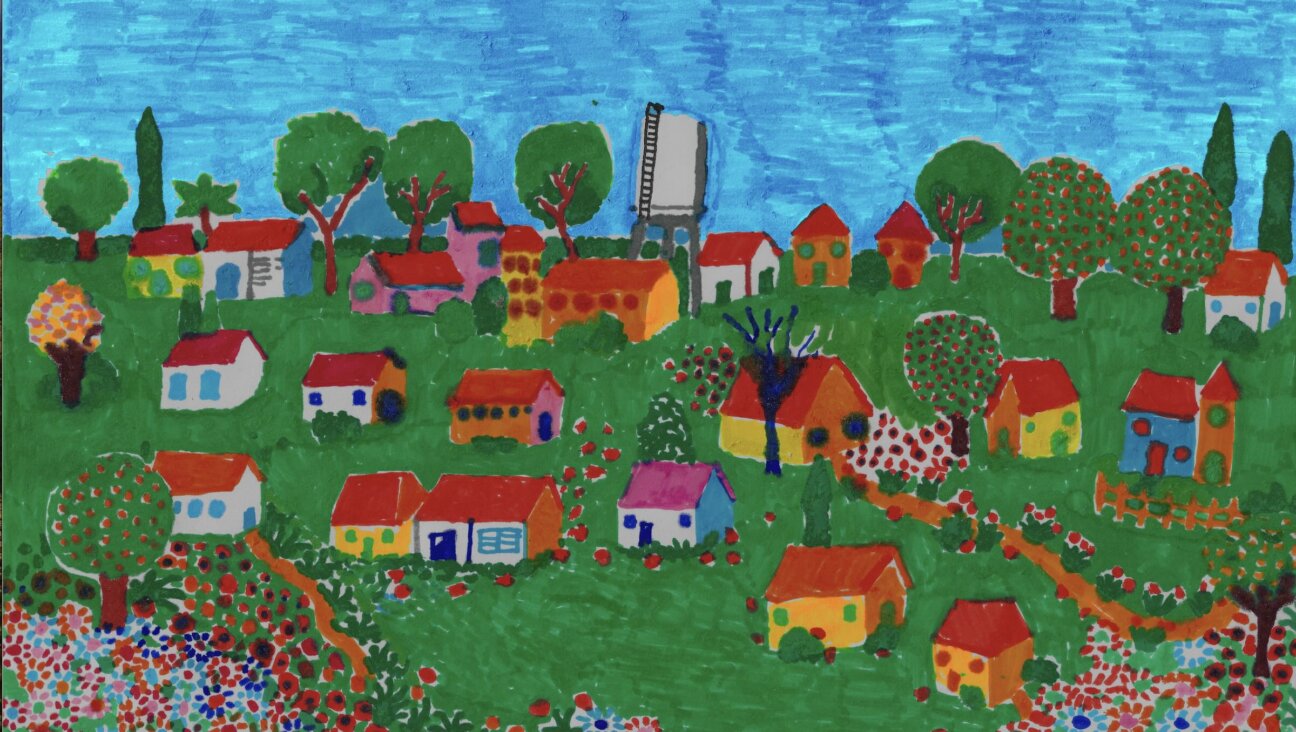Jigsaw Tales of Wandering Jews

Fictional Story of His life: Aharon Appelfeld for real. Image by FRéDéRIC BRENNER
Laish
By Aharon Appelfeld, translated by Aloma Halter
Schocken Books, 240 pages, $23.95.
Celebrated author and Holocaust survivor Aharon Appelfeld commemorates the collective past by populating his creative work with a wide assortment of Jewish characters. In his multifaceted fictional world, Appelfeld constructs a panorama of Jewish life before, during and after the Shoah. In English, however, pieces of the picture are missing. Many of his texts have yet to be translated. Now, with the English translation of “Laish,” a novel published in Hebrew in 1994, readers who follow Appelfeld in his English translations can fill in some of the lacunae in his artistic universe.

Fictional Story of His life: Aharon Appelfeld for real. Image by FRéDéRIC BRENNER
“Laish” takes on special resonance, as it is appearing in English after Appelfeld’s memoir, “The Story of a Life, (1999 in Hebrew, 2004 in English), a work that details personal experiences from Appelfeld’s formative years that have become the source for a variety of episodes, characters and images throughout the writer’s oeuvre. The memoir suggests how the many parts of the author’s imaginative world fit together, stemming, as they do, from his own past.
Where does “Laish” fit in? This melancholy yet lyrical narrative, part picaresque novel and part enigmatic fable, follows a band of Jews who roam about Eastern Europe, camping along the Prut River. Their ostensible goal is to one day reach Jerusalem. The cast of characters in the ragtag-pilgrimage includes sages and elders, merchants and wagon drivers, thieves and thugs, victims of pogroms and a rabble of assorted folks suffering all manner of misfortune. Along the way, they meet with a series of disasters: Epidemics, floods and attacks delay them; distractions and desertions compound their difficulties, leading to quarrels and indecision. Narrating these travails is a 15-year-old orphan named Laish.
As a tale of wandering Jews, “Laish” recalls many of Appelfeld’s other works, but none so vividly as “The Story of a Life” — particularly, that book’s account of refugees, after the Holocaust, making their way across Europe to Italy and contemplating aliyah. “Laish” is set in an earlier, ill-defined period, yet, like the memoir, the novel portrays an era of migration, of displaced lives, and a world in which greed, corruption, theft and violence are ubiquitous.
A notable incident in “The Story of a Life” revolves around a search for contraband, conducted by the Italian police. After the raid, black marketers pounce on a man named Shmil, accuse him of informing against them and beat him to death. In “Laish,” a character named Ephraim is similarly accused of being a snitch and is beaten. The episode in the memoir, however, consists of a few brief sentences; in the novel, the parallel events unfold around multiple chapters.
Unlike Shmil, Ephraim is grievously wounded, but he survives long enough for the other Jews to ask his forgiveness, to tend to him and to bear the burden of their guilt by carrying him along with the convoy. As he suffers, he attains exceptional spiritual heights and reports near-death visions suffused with divine light. In the midst of the most grotesque and painful circumstances, Appelfeld manages to uncover redemptive gestures, small acts of compassion and occasional moments of wonder. “Laish,” like “The Story of a Life,” presents an array of dreadful, evil personalities and acknowledges individuals who, in the worst of times, protect and care for others, teach children to read and to write, and continue to pray.
Another parallel between the memoir and the novel is the way they foreground an orphan’s sorrow. “The Story of a Life” recounts aspects of Appelfeld’s own childhood, when he was wandering alone in the forests after escaping a Nazi camp. At that time, Appelfeld says, although he knew his mother had been murdered, he never lost the feeling that his parents were waiting for him, protecting him throughout the war. He notes: “Her death is deep inside me, but more a part of me than her death is her reappearance after it. Any time I’m happy or sad I see her face.” Similarly, Laish says that his parents’ features “have been effaced” from his memory, yet they come to him in dreams. He feels his parents’ presence as souls that intercede on his behalf.
This boy latches on to a number of older figures. Some prove to be cruel and selfish, others kind and generous. The masters he serves range from miserly, cynical Fingerhut to abusive, murderous Ploosh and rough but charitable, dependable Sruel. Along with degradation and misery, Laish observes instances of selflessness and gains wisdom from the holy men among his companions. In his hunger for family and belonging, he also idealizes his fellow travelers, who, like him, yearn for a haven. What sustains him in his loneliness is a belief that Jews will remain bound to one another, no matter what. Is his sweet yearning misplaced in such a bleak context? Does it invite ironic mockery, or is it indicative of a profound sense of connection and heartfelt nostalgia for faith?
It’s not clear how much the author identifies with his character here and to what extent he exposes naiveté as folly. What’s clear is that Laish, like the author himself, comes to serve as a guardian of memory and the collective past. He chronicles the life of the convoy, jotting down impressions of the journey and recording the names of the dead in a notebook. “Laish” is hardly a portrait of the artist as a young man, but the act of producing writing that sustains a community has an undeniable pivotal role here, and so Laish earns himself a place of honor. Beset by losses, he is also an affecting figure. The reader senses his genuine pain when people he knows drift away — and over time, many do. The number of travelers dwindles, only a remnant persists, and ascent to Jerusalem seems ever more elusive. Still, Laish clings to his dream of unbreakable bonds, and though he admits the caravan grows smaller from week to week, he insists that “anyone who has ever been a part of it will miss it forever.”
“Laish” meanders as the wanderers straggle on. The episodic plot structure is classic Appelfeld, as is the spare, melodic prose. In his trademark style, the author combines understatement with repetitious, sometimes dilatory storylines to convey disorientation and dislocation. For the patient reader, there are gems to discover along the winding path. Laish himself alerts us to this, inviting us to keep reading as he remarks, “Who knows what will turn out to be important and what will prove trivial?” Haunting images surface frequently — sometimes when least expected — encapsulating gestures of grief, generosity and disillusionment in a collective story of restless wandering.
“Laish” reads like a symbolic description of postwar refugees, even as it commemorates a prewar world of Jewish suffering and faith. Mixing memory and imagination, Appelfeld produces a kind of timeless fictional realm. And the novel reveals the author experimenting — in fiction — with first-person narration, before turning to the genre of memoir. “Laish” in English goes beyond filling a gap in the bookshelves of Appelfeld devotees; it helps chart the winding paths the author has taken toward self-writing in his devotion to imaginative depictions of the Jewish past.
Naomi Sokoloff is a professor of Hebrew and modern Jewish literature at the University of Washington, Seattle.
A message from our Publisher & CEO Rachel Fishman Feddersen

I hope you appreciated this article. Before you go, I’d like to ask you to please support the Forward’s award-winning, nonprofit journalism during this critical time.
We’ve set a goal to raise $260,000 by December 31. That’s an ambitious goal, but one that will give us the resources we need to invest in the high quality news, opinion, analysis and cultural coverage that isn’t available anywhere else.
If you feel inspired to make an impact, now is the time to give something back. Join us as a member at your most generous level.
— Rachel Fishman Feddersen, Publisher and CEO























